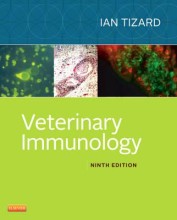Summary: Animal Nutrition | 9780471903758 | Aron A Bondi
- This + 400k other summaries
- A unique study and practice tool
- Never study anything twice again
- Get the grades you hope for
- 100% sure, 100% understanding
Read the summary and the most important questions on Animal nutrition | 9780471903758 | Aron A. Bondi
-
1 general introduction
This is a preview. There are 6 more flashcards available for chapter 1
Show more cards here -
What is a diet?
- material which, after ingestion by animals, is capable of being digested, absorbed and utilized
- The derm 'diet' is used to describe edible material of nutrients
- plant and plant products form the major source of nutrients in animal nutrition -
What is a nutrient?
- any chemical element or compound that supports normal reproduction, growth, lactation or maintenance of life processes
- six classes- water
- carbohydrates
- lipids
- proteins
- vitamins
- minerals
-
A reliable and manageable system to evaluate feedstuffs has to be
- additive -> Most diets are composed of different feedstuffs and these contain different nutrients. The feeding value of the diet should equal the sum of the different components
- Reliable -> The feeding values should be as accurate as possible
- Easy to determine -> The determinations methods should be simple and fast so that they can be used for routine analyses. Data has to be available fast because the value of feedstuffs can differ between batches due to difference in harvesting circumstances, treatments and observation methods, breed of plants etc. -
2 Nutrient requirements
This is a preview. There are 71 more flashcards available for chapter 2
Show more cards here -
Animal product composition
- The mammary gland synthesizes all or most of the major milk constituents from various precursors which are selectively aborbed from the blood
- The gland is also actively and selectively transfers specific proteins, minerals and vitamins from the blood to the milk -
Funtion fatty acids
- The exact function are not known but 2 probably vital areas are- They are an intergral part of the lipid-protein structure of cell membranes
- They appear to play an important role in the regulation of release of hypothalamic and pituitary hormones
-
Chemical and physical structure
- Chains of C-atoms ranging from 2 to 24 or more with a carboxyl group (-COOH) on the end of each chain
- general structure -> RCOOH
- saturated fatty acids -> no double bond + has the maximum number of hydrogens bonded to the carbons
- unsaturated fatty acids -> there is a least a single double bond
- fatty acids can occur as the sis or trans isomer -
Chemical and physical structure 2.0 FA
- Most found are straight-chained and contain an even number of carbons
- Branched-chain fatty acids and those with an odd number of carbons are more common in micro-organisms
- Tissues of ruminants contain relatively large amounts of these fatty acids -> as a result of rumen fermentation and the subsequent absorption of these microbially derived acids -
Metabolism of faty acids
- 3 major sites of biosynthesis of fatty acids and triglycerides -> liver, body fat and mammary glands
- The liver is the central organ for lipid interconversion and metabolism
- role of the liver:- synthesis of fatty acids from carbohydrates
- synthesis of fatty acids from lipogenic amino acids
- sytnhesis of cholesterol from acetyl-co-A
- synthesis of phospholipids
- synthesis of lipoproteins
- synthesis of ketone bodies
- degradation of fatty acids
- degradation of phospholipids
- removal of phospholipids and cholesterol from blood
- lengthening and shortering of fatty acids
- saturating and desaturating of fatty acids
- control of depot lipid storage
- storage of liver lipids
-
Calcium toxicity + Deficiency
- toxicity- Rare, only occurs when the intestinal regulation of Ca absorption is disrupted by a surplus of vitamin D.
- excess may cause kidney damage
- deficiency- Rachitis (enlarged joints, soft bones and deformations) in young animals
- Osteoporosis (too much Ca absorption from bone tissue) in older animals
- Short term deficiency in early lactation -> hypocalcaemia -> sudden high demand of Ca -> muscular spasms, paralysis and unconsciousness
-
Phosphorus toxicity + Deficiency
- toxicity- not known
- Excess P in feed may decrease Ca absorption
- Major route of excretion is in the feaces but a high P to Ca ratio may cause urinary calculi
- deficiency- quite common due to presence of P in the soil in a form which is not available for the plant
- symptoms -> general weakness, loss of appetite, depraved appetite, muscle weakness and fertility problems
- Higher grades + faster learning
- Never study anything twice
- 100% sure, 100% understanding






























